Long-legged Buzzard twitching mega rarity
“Is this really a Long-legged Buzzard?” was the question from Reinhard Hölzl, a friend and local photographer (check out Reinhard’s website here) with two photos attached to the message (top and below). My gut said yes, Long-legged Buzzard (Buteo rufinus) and everything I could tell from the photos and the books seemed to suggest so, but without seeing it flying and without any size references I really was not completely confident that I could exclude Steppe Buzzard (Buteo buteo vulpinus) and – evidently – the only record of Long-legged Buzzard in Tirol (western Austria) is from 1890! Dick Forsman‘s comments on the photos were as follows:
It really looks like a juv Long-leg! I am surprised to see that they occur as far north as this in mid-winter. Some Steppe Buzzards can be extremely similar on the underbody, but the following combination speaks strongly for a Long-leg: very pale iris, new and fresh lesser upperwing coverts extensively rufous with narrow dark shaft-streaks, apparently uniform outer tail-feathers (this can, however, be difficult to judge for sure from this angle). Also the very worn median and greater upperwing coverts speak for a dry, desert-like origin and an earlier breeding window compared to Steppe B. I think it is pretty safe to say, that no juv. Common Buzzard should have this coloration. Size would be important, but is of course impossible to assess from a picture.
Despite three days traipsing through snow in the area where the probably Long-legged Buzzard was seen, I have come up dry. Well, actually rather wet and cold, but without being rewarded with a great vagrant. But this whole Long-legged Buzzard thing has got me looking at our Common Buzzards more clearly. In the past couple of weeks we have suddenly gotten a great big invasion of buzzards, presumably from Germany and Scandinavia which have had hard, snowy winters thus far.
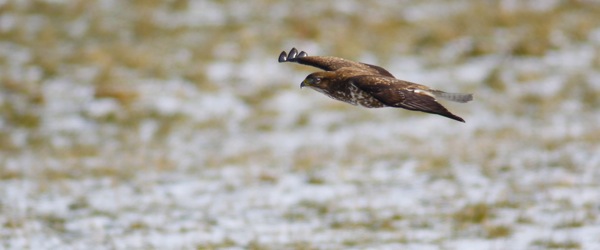
Common Buzzard flyby digiscoped (c) Dale Forbes. Swarovski Optik STM telescope, TLS800 adapter, Canon 5DmarkII
But the buzzards aren’t everywhere evenly distributed. For example, the field around the village where I live has had few Common Buzzards recently, but yesterday the fields in the neighboring village had at least 20 buzzards on them, all in a very small area. Which lent itself to trying to photograph them. But the thing is, they are really surprisingly shy. A great big bus can drive within 4m of them going 80km/h, but don’t even think about slowing the car down or walking up to them. The would flush at about 50m, so I was left hoping for flybys.
Now a much better idea would be to take up Reinhard’s offer to use his camo photography tent, lay out bait and hope that some come by before my little toes freeze off (I’ve heard it said that Reinhard’s motto is that 5hrs in a hide might just be 5mins too few…. The man has a great deal of patience and a great eye for creating images, something I really respect in him). In the meantime, I will have to make do with the odd flyby buzzard
and whatever else pays me a visit…
With my newly kindled interest in buzzards, I have started to really look at them closely and quickly grown to love the staggering diversity of plumage and shape they exhibit. Wonderful. Maybe you want to start looking at your Buteos a little more now?
Happy birding,
Dale


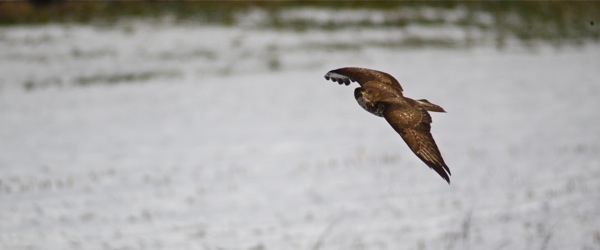


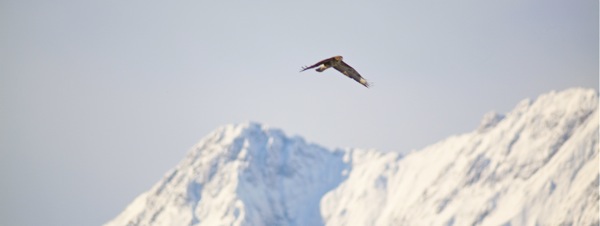
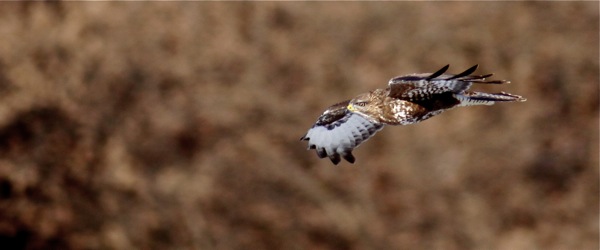
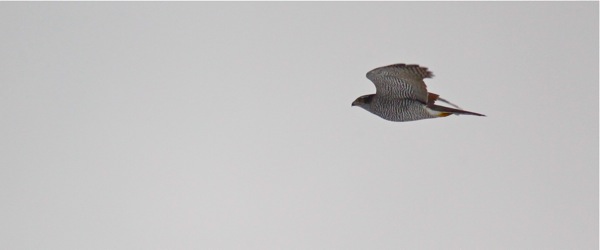
Neat stuff. Several times in the past I’ve had experiences sort of like this, where searching for a particular rare bird forced me to look more closely at some of the common birds. That’s always rewarding, whether or not the rarity ever turns up.
A friend once gave me some sage advice: don’t bother looking at any other raptors (and forget about the eagles) until you can confidently and reliably identify every type of common/steppe buzzard. When you can do that, then think about the other stuff.
In my own travels, I have always loved the geogaphical variation of people: how they live, their social environment, social norms, what is right/wrong, dialects, customs, languages, foods… beautiful diversity.
And I love discovering this diversity in animals and plants too. Mealy’s Parrots in southern Costa Rica spoke a different dialect from those a few hundred km away (or less). And not all the blue tits in my garden look the same. sometimes, looking a little closer can bring wonderous insights, just ask any dedicated patch birder.
Great post. I wish I had a chance to study Common Buzzards again.